Types and characteristics of filter cups for hand-brewed coffee introduction to the types and differences of filter cups for hand-brewed coffee utensils
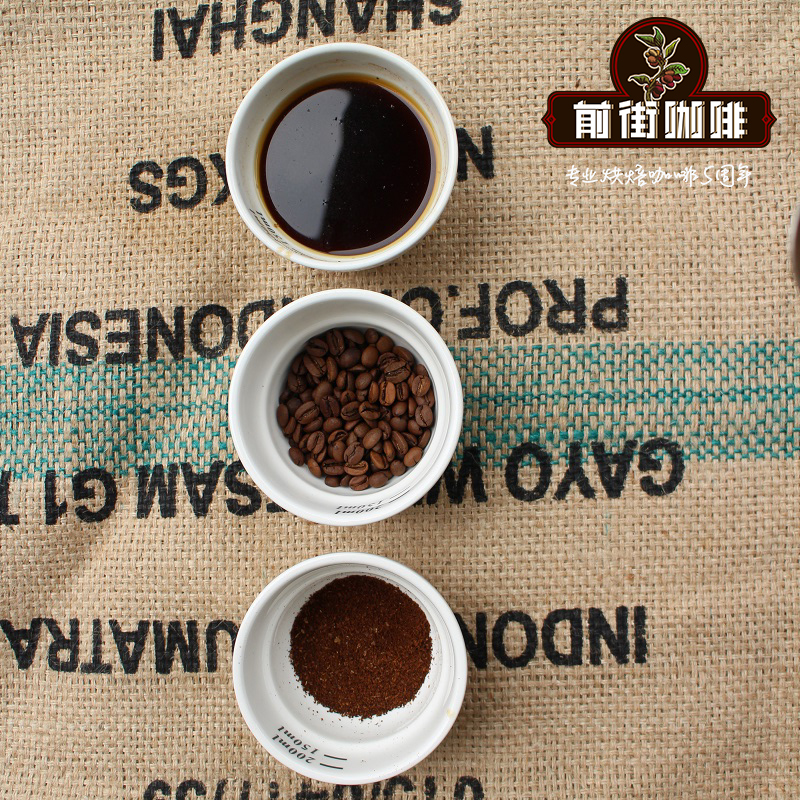
Affecting the flavor of a cup of hand-brewed coffee is the most important, the answer is that everything is important, this is not what Qianjie said, it is true. And hand coffee utensils will compare the choice of filter cups, after all, there are so many types of filter cups, must have a different extraction purpose, with different roasted coffee beans, the final flavor has different flavor characteristics.
Before the birth of the hand filter cup, coffee was made directly in the pot. It was not until June 20, 1908, when Melitta Bentz, a housewife from Dresden, Germany, invented the world's first coffee filter cup, that the dilemma of directly boiling coffee residue in the pot was ended. After that, Mrs. Melitta redesigned the Melitta filter cup and became popular with the third wave of coffee. Individual boutique coffee is becoming more and more popular, and hand-brewed coffee is also sought after and loved by coffee lovers, so the design style of filter cup is also emerging in endlessly.
The editor will first talk about the classification of filter cup materials (ceramic, copper and resin) and the number of holes on the filter cup (single pore, double pore, three pore and porous).
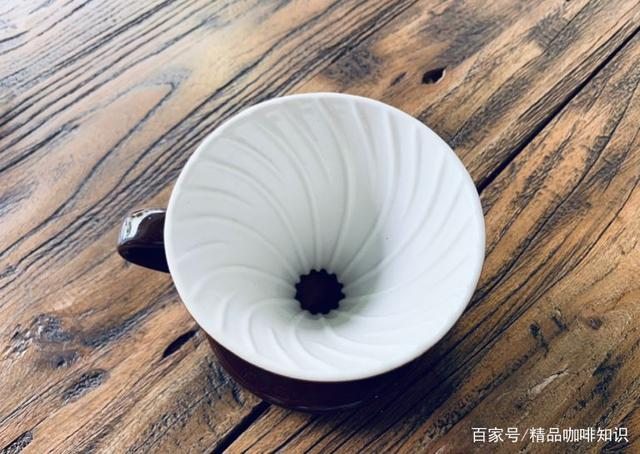
Ceramic: the ceramic filter cup needs to be preheated in advance, because the temperature will decrease when the water touches the ceramic surface, but the advantage of ceramic is good heat preservation. After heating once, the temperature can be maintained for a long time, which is suitable for use in winter. And the ceramic filter cup and the ceramic coffee cup are also very compatible.
Copper: the copper filter cup is excellent in both thermal conductivity and thermal insulation, but its shortcomings are also very obvious, the price is high and it is not easy to keep, and it is easy to rust if it is not wiped dry. So store it in a dry and cool place after each use. Many coffee makers collect copper filter cups. After all, the charm of copper filter cups is obvious.
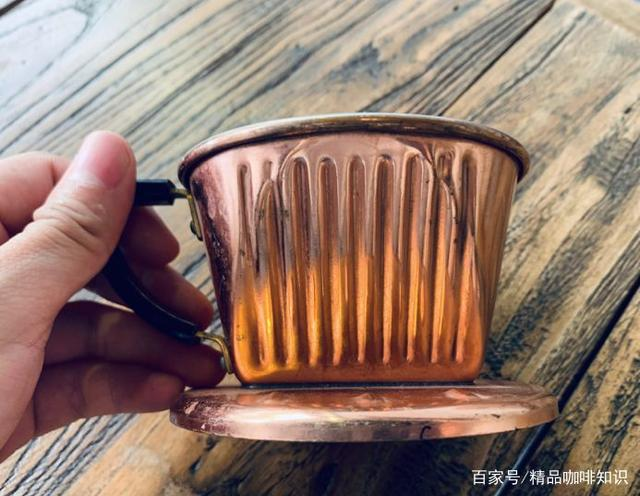
Copper filter cups are very textured in appearance, and a considerable number of people are happy to collect copper filter cups, and their thermal insulation and thermal conductivity are excellent. But if you don't take good care of it, the remaining water droplets will oxidize the copper into black spots.
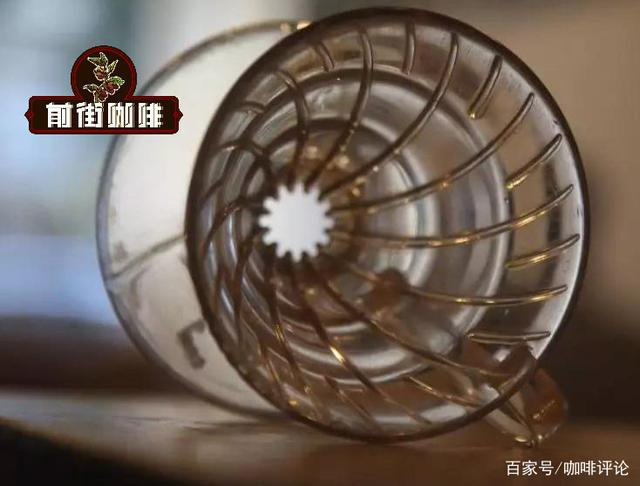
Resin: most of the filter cups of resin are transparent, so it is easy to see the dripping state of coffee liquid during coffee extraction through the filter cup, and it is light and easy to carry. The advantage is economical, cheap, unbreakable, the disadvantage is that the handle is poor, easy to dirty, not timely cleaning, ribs will have traces of coffee residue, but also our daily contact with the most filter cup material.
Classified according to the number of holes (the more holes, the less likely to clog, the faster the flow rate, the higher the technical requirements of hand punching)
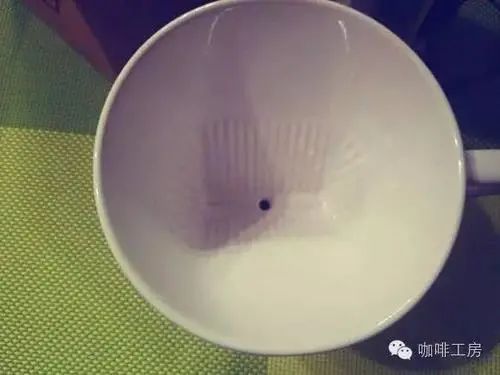
Single hole: pioneered by Mrs. Melita, the single-hole filter cup is mainly used for German medium-depth baking.
Double-hole: the function of double-hole filter cup is between single-hole filter cup and three-hole filter cup, which is mainly suitable for light-medium baked beans.
Three-hole: three-hole filter cup is not easy to clog, it is simply a universal filter cup, can be called "a cup in hand, not afraid to go all over the world", suitable for all kinds of roasted coffee.
Porous: filter cup later developed more and more holes, there are four holes, six holes and even eight holes. In general, the more holes, the higher the required technology, and the greater the variables caused by the extraction process.
Hario has won numerous design awards since its inception, but it launched V60 around the year 2000. The name V60 comes from the fact that it has a 60 °angle and was first made of ceramic and glass, then plastic, and finally copper as we see it today.
Compared with other filter cups, Hario V60 is characterized by:
1. Filter cup shape: the shape of the filter cup is tapered at an angle of 60 °. In this shape, the water flow of the filter cup can flow to the center of the filter cup and prolong the contact time of powder and water.
two。 Single large hole: adjust the flavor of coffee through the speed of water flow.
3. The spiral rib design of the cup wall: the biggest difference from the KONO is that the thread of the Hario V60 extends directly from the bottom to the top, allowing air to be discharged from the filter cup and maximizing the expansion of the coffee powder.
After watching the investigation of these three designs, let's go back to the cooking factors. The two most important factors that the brewer can control are the grinding scale and the flow of water. If you slow down the filling rate, it may make full-tasting coffee, and if you pour water faster, it may make the coffee lighter and lighter.
In addition, there are a few points to pay attention to when using Hario V60 filter cup:
Steady flow + fine grinding = medium alcohol thickness
Slow flow + fine grinding = full alcohol thickness
Steady flow + medium grinding = light taste
Slow flow + medium grinding = light taste
To sum up, the quality of the coffee brewed from Hario V60 is relatively stable, and the flavor can be balanced or more layered. The ribs of V60 filter cup are distributed in a curved shape from top to bottom, and the length is different, the exhaust is relatively smooth and the flow rate is relatively fast during brewing, because of this, this filter cup is generally selected to be extracted by stages, first, the flow rate can be slow. Second, it can improve the extraction, to a certain extent, it can reduce the lack of extraction caused by fast flow rate.
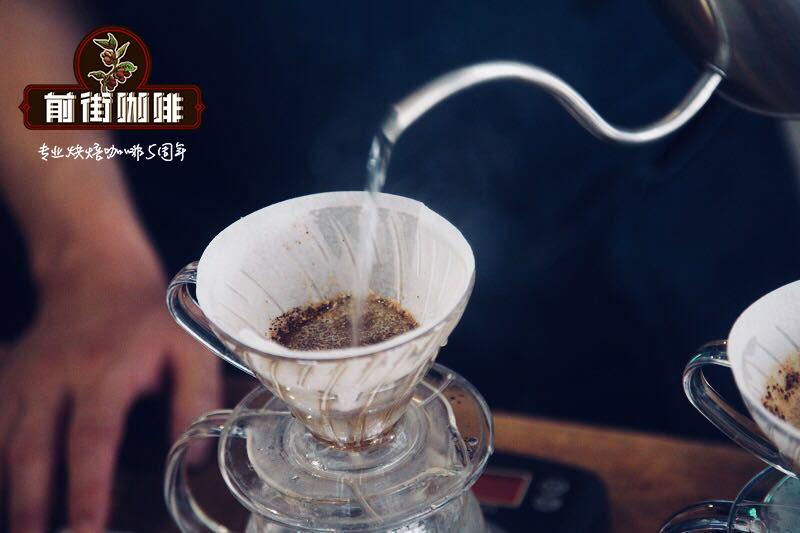
Hario V60 Brewing Practice:
Brew coffee beans with 30g water for 30 seconds, add water to 130g in circles, slowly flush to 230g when the water level drops, remove the filter cup when the water level drops, and extract for 152 ".
V60 (invented by Japanese company HARIO and currently the most popular coffee filter cup)
Filter cup design: perfect cone shape, spiral pattern, large circular hole in the center.
Extraction characteristics: the design of the filter cup pattern can make the flow rate more uniform, and its powder layer is relatively concentrated in the middle, which is conducive to full extraction. The spiral ribs allow air to escape upward from all sides to maximize the expansion of the coffee powder and direct the flow of water to increase the flow rate. However, the water flow at the groove of the filter cup is easy to gather, resulting in partial coffee powder over-extraction and partial coffee powder extraction deficiency; the design of the large circular hole in the center can increase the flow rate and make up for the non-uniformity of extraction to a certain extent. Because of its large filter opening, the operator's water injection speed and the amount of water injection are the key to determine the speed of leakage, but also the key to determine the coffee concentration, so V60 has relatively high requirements for technical operation, suitable for operators who have certain hand flushing experience. (Use of Hario V60 filter cups requires some brewing skill and stability)
Then look at KONO, which is also a perfect cone with a circular hole in the center.
KONO is a leading Japanese coffee maker. The original KONO filter cup was created by a Japanese named Toshio Kono, after whom the filter cup is named.
KONO is a favorite coffee appliance for specialty coffee shops and coffee professionals in Japan, and is also sought after by many coffee lovers who prefer drip coffee.
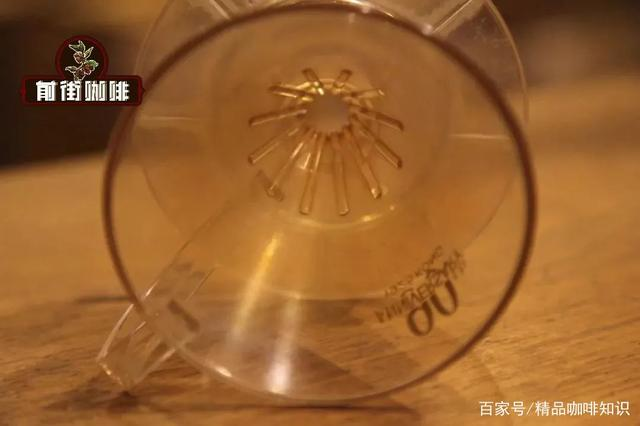
What is the Kono filter cup?
Kono is a famous Japanese company that makes coffee utensils. The maker is a Japanese named Toshio Kono. The filter cup is named after him.
Kono coffee filter cups and original wooden handle coffee pots have always enjoyed a high reputation among drip filter coffee fans. Mr. Kono, the president of coffee filter cups and coffee pots, has studied delicious coffee for many years, and has designed a series of coffee pots full of pastoral Kono coffee filter cups and log handles.
Kono is not only the favorite professional coffee utensils used by coffee stores and coffee professionals in Japan, but also the product pursued by many lovers who like drip coffee.
Characteristics of Kono filter cup
What is special about the Kono filter cup is that the guide groove of its "ribs" extends to the bottom of the hole where the coffee liquid flows out, because the ribs are very short at the bottom and have a high fit with the filter paper, so the flow rate is slower than the V60, and the ribs will prop up a small gap between the conical wall and the filter paper, so that the coffee liquid can ooze out of the filter paper, while the part of the service wall will not ooze.
A closer look at the ribs of the KONO filter cup shows that the Kono has 12 ribs, which are much lower than the Hario V60 and stop when it is less than half the height of the filter cup.
If the ribs are too short or too shallow, the range in which the coffee can ooze becomes too small, and the extraction time will be lengthened. On the contrary, when the ribs are too long, the hot water will come into contact with the coffee powder for too short a time, and it will ooze out at once, and the impurities that float out of the liquid surface will easily mix into the coffee.
Due to the design of the ribs, the fit between the filter cup and the filter paper is high, which ensures that in the process of dripping, the exhaust space of the filter cup is limited, the air flow is naturally limited, and the flow rate slows down. it makes coffee powder soak for a large part of the time, which increases the water absorption time of coffee powder particles, thus making the extracted coffee more balanced as a whole. It is not easy to cause insufficient extraction.
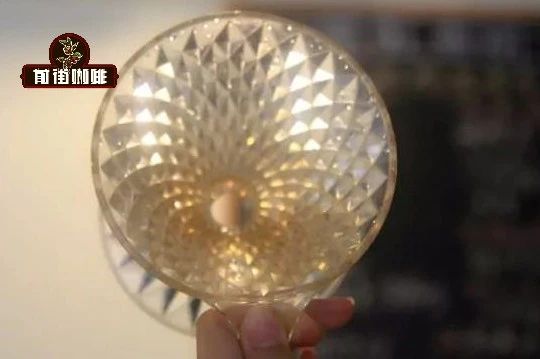
Key home diamond filter cup
The diamond filter cup is surrounded by a diamond cut, and the center is a relatively large outlet.
The design of the diamond pattern of the filter cup can make the velocity more uniform.
The design of the large round hole in the center of the filter cup can increase the flow rate and make up for the non-uniformity of extraction to some extent.
The filtration speed varies with the void area on the filter cup, the hole is smaller than V60, and the filtration speed is slower than V60.
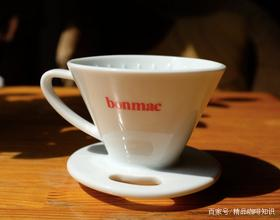
Bonmac Dripper
Filter cup design: wedge design, vertical grain, small round hole in the center, bottom observation window.
Extraction features: in a sense, Bonmac Dripper is a perfect filter cup. The perfect match between the size of the filter cup and the small round hole in the center makes the extraction speed neither too fast nor too slow, the flow rate is very stable, and the consistency of coffee is perfect. All you need to adjust is the degree of grinding and the ratio of water to powder.
Bee House
Filter cup design: wedge design, vertical grain, double hole, bottom observation window.
Extraction features: with this filter cup, Andy Sprenger has won 2011 and 2012 world championships successively. "I extracted a lot of cups of coffee with Hario V60 and Kalita Wave, and it worked well. But I used the Beehouse filter cup to get my most satisfied cup of coffee, the most flavor, the cleanest, the most uniform extraction. "
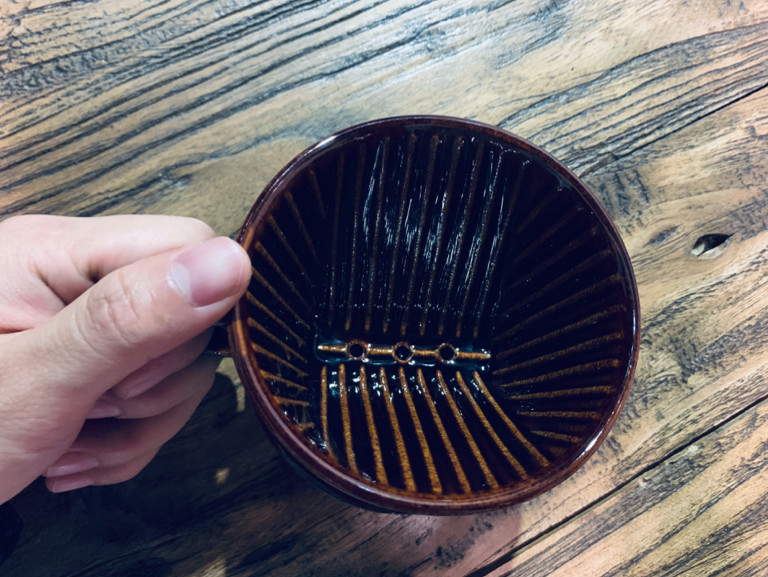
Kalita Wave
Kalita Wave Dripper is a flat-bottomed filter cup from Japan, also known as cake cup. Kalita has been producing coffee equipment since 1950, and the streamlined style of Kalita Wave is a typical feature of their products.
Filter cup design: flat bottom, three holes.
Extraction characteristics: the bottom of the cake filter cup is flat, in the process of water injection, the pouring water can infiltrate evenly, which can well control the flow rate of the extraction process. The ripple of the filter cup wall is combined with the design of flat bottom and small hole to make the contact time between water and coffee powder reach the ideal state.
Although the aroma of cake cup hand is not as strong as that of cone-shaped filter cup, the overall flavor of beans still has a solid taste and sweetness.
Kalita Wave drip filter cup is suitable for moderate grinding, it is recommended to be a little thicker than when you use V60, this filter cup is relatively slow to enter the water. Although there are three drip holes, they are all very small. Coffee powder grinding too fine will increase the extraction rate, will not make the flavor more prominent, but will be easy to over-extract, drinking the end will be astringent.
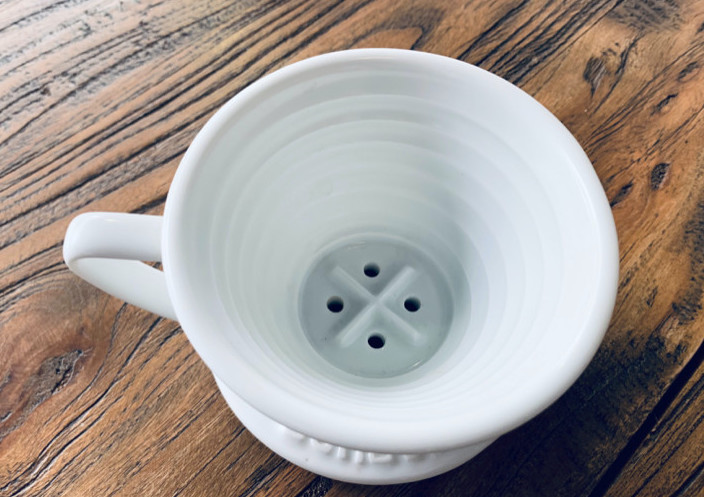
Bonavita Next wave
Filter cup design: tapered flat bottom, ring pattern, four holes
Extraction features: annular diversion combined with Next Wave filter paper makes the hot gas discharge and the whole hot water and coffee extraction process more reasonable, four holes will control the extraction flow rate in the best state, higher extraction rate, suitable for shallow baking beans, richer taste layer, thickening cup wall is conducive to brewing time temperature constant temperature, showing a better taste level.
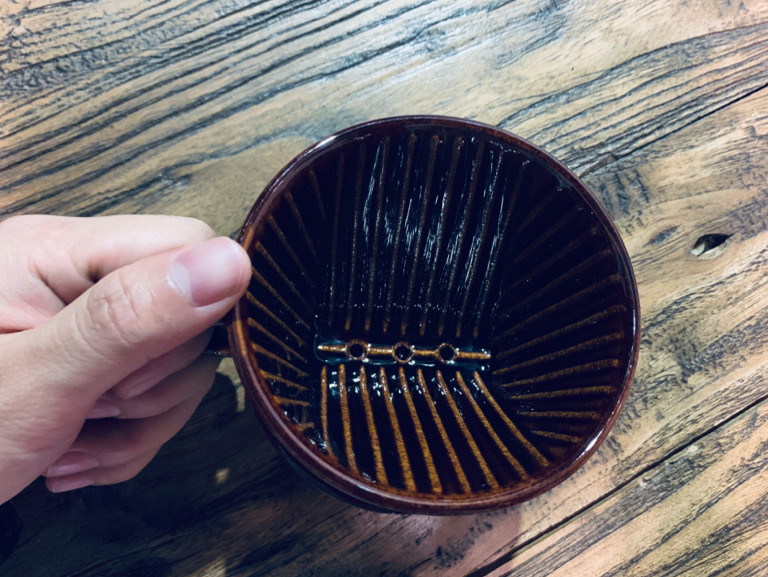
Kalita three-hole trapezoidal filter cup
Kalita trapezoidal filter cup, also known as "fan-shaped filter cup" or "table-shaped filter cup". In 1959, Kalita modified the fan-shaped filter cup, changing the single hole which is small and easy to clog into three holes, and then from single-hole to multi-hole (six-hole or eight-hole), but the most common are single-hole and three-hole fan-shaped filter cups.
Filter cup design: the shape is wide at the top and narrow at the bottom, the top is round, the hole is small and has three holes (not easy to block)
Extraction features: kalita trapezoidal filter cup design shows a wide and narrow shape from the side, showing a circle at the top, this design is conducive to the concentration of water, but also allows coffee particles to be evenly distributed, reducing stacking conditions, more ribs on the cup wall, a linear distribution, the distance between the ribs is consistent, the purpose is to increase exhaust and flow speed. At the same time, its flow rate is relatively slow, and it is mainly extracted by soaking, which can show a better alcohol thickness.
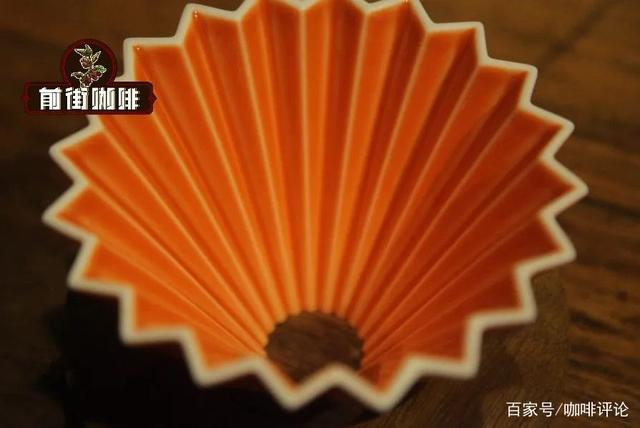
Origami coffee filter cup
"Origami" means "origami" in Japanese, so it is also called "origami filter cup". Made in Japan and designed by Mr. Yasuo Suzuki (Suzuki), co-founder of Nagoya Trunk Coffee, each filter cup has a "20% discount" and is fired by hand.
Filter cup design: Bowl type flat bottom, vertical grain, single hole
Extraction characteristics: feel between the V60 and Wave cup extraction mode and the flow rate is just right, the bottom of the filter cup is flat and smooth, the water diversion groove extends from above to the bottom, the design concept of folding paper filter cup is to let water accumulate at the bottom, and then flow slowly, the flow rate is smooth and the extraction of coffee is not easy to over-extract, high temperature preservation, can maintain the overall temperature of coffee, extraction coffee is relatively stable.
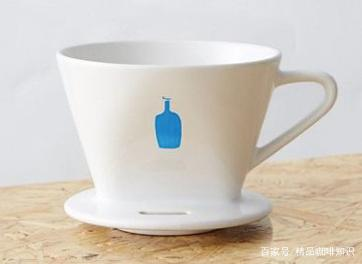
Blue bottle filter cup
Filter cup design: ladder-shaped flat bottom, vertical grain, single hole
Extraction characteristics: This fan filter cup feels very slow, and the water flows out along the bottom of the filter cup, which is not smooth, but the coffee extraction is very uniform.
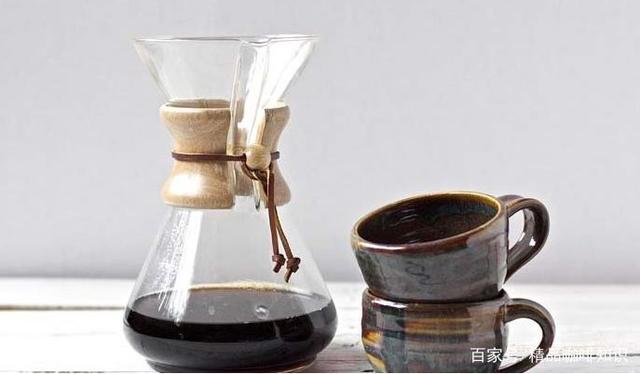
American style follicle pot chemex
The American follicle pot is a coffee pot invented in the United States by Dr. Peter J.Schlumbohm, who was born in Germany in 1941. Its design and particularity are recognized, not only selected as the "Illinois Institute of Technology" top 100 modern products, but also displayed by New York MoMa as a permanent collection of "Smithsonian and the PhiladelphiaMuseum of Art".
The uniqueness of the American bubble pot is that the coffee pot and the filter cup are integrated, not separate. On the slender waist, the appearance wrapped in wood and leather rope is quite advanced and elegant. But the secret to extracting pure but flavored coffee lies elsewhere.
The upper part of the filter cup of the American bubble pot has an air channel (air channel) in the shape of a funnel, which can supply air smoothly when extracting coffee, and the filter paper can be easily removed after use.
The filter paper of the American bubble pot is not funnel-shaped, but flat four corners or round filter paper. Maybe it's because the inventor used to be a doctor of chemistry. The filter paper used in the American bubble pot is about twice as heavy as the ordinary filter paper, but its advantage is that it can leak strong but non-bitter coffee.
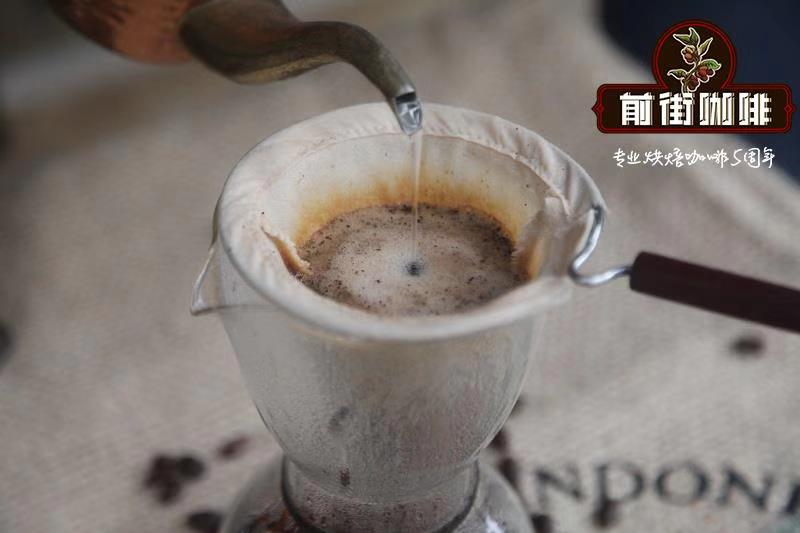
flannel coffee filter cloth
Flannel, Japanese experts think highly of it, called it "to meet the needs of professionals." Compared with filter paper, filter cloth is superior in "permeability, heat preservation and moisture retention". Flannel is breathable, hot air can be released from any place, there will never be "volcanic bubbles", good insulation, moderate drip rate, even beginners are very easy to use, but flannel filter cloth bag coffee is a time-consuming thing, so the coffee temperature is low, preheating coffee cup can slightly increase the temperature of coffee. Do not re-heat coffee in any form.
But the biggest disadvantage is that cleaning is very troublesome, every time you use it, you must carefully clean it, and boil it with boiling water. You must not leave any coffee grounds on the flannel. In order to prevent the coffee traces on the flannel from oxidizing and smelling, it is best to put the flannel into a container filled with water after cleaning. Soak it in the container and put it in the refrigerator for storage.
And generally after brewing 30-40 times, you need to replace the filter cloth, Japanese experts suggest that every 20 times after brewing to replace the flannel, and this flannel is sometimes very difficult to find, this is also a more troublesome thing.
These factors may be the main reason why flannel filter cups are not popular in China.
Since we're talking flannel coffee filter cloth, let's also talk about hand-washed filter paper.
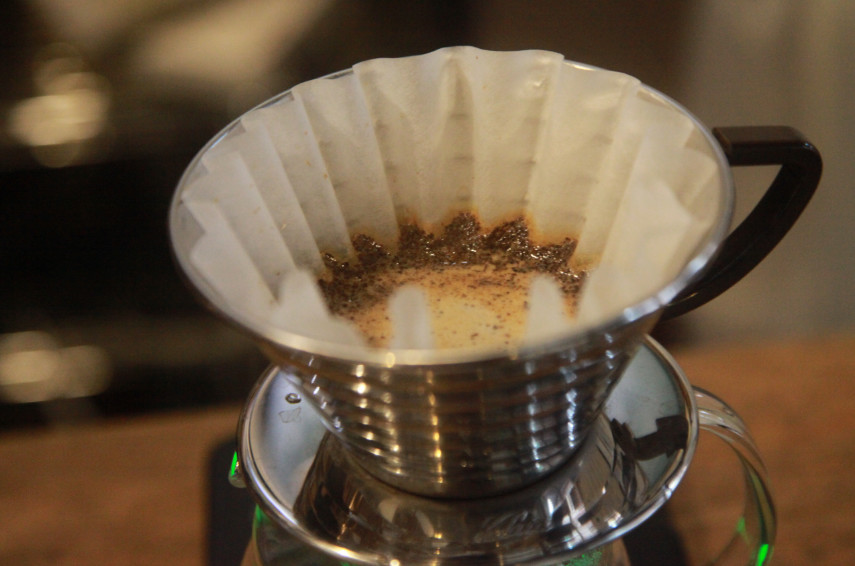
Filter paper is mainly divided into bleaching, non-bleaching, the difference between the two lies in the taste of filter paper is heavy or light, unbleached filter paper often has a heavy paper flavor, the common types of filter paper are tapered filter paper (V60 filter cup), fan filter paper (kalita trapezoidal filter cup), cake filter paper (cake cup).
The metal filter screen is very convenient, saving the trouble of using filter paper every time, and saving the cost of buying filter paper, but no matter how fine the filter is, there will always be a small amount of fine powder dripping down with the coffee liquid (anyway, Xiaobian doesn't like to drink coffee droplets with coffee ballast), but the coffee made by the metal filter will retain more coffee oil, so it can be as close to the original flavor of coffee as possible. It is also relatively rich and mellow compared with filter paper in taste.
Understand these handmade filter cups ~ are you afraid that you don't know how to select the filter cups? Hey, hey, you can learn, believe me ~ you will fall in love with the taste of the single item.
Important Notice :
前街咖啡 FrontStreet Coffee has moved to new addredd:
FrontStreet Coffee Address: 315,Donghua East Road,GuangZhou
Tel:020 38364473
- Prev
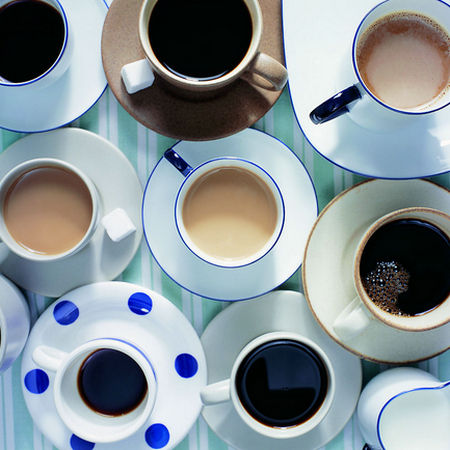
Coffee brewing golden cup standard coffee how to brew coffee the golden proportion of coffee brewing
According to the research of Dr. Lockhart and Ringo, a senior consultant of SCAA (American Fine Coffee Association), as far as coffee extraction is concerned, the dissolution rates of flavor molecules and hot water often vary according to molecular weight and polarity. Coincidentally, the low molecular weight sour aroma of flowers and fruits, as well as the taste of nuts and toast, as well as the cereal and rice and wheat flavors produced in the early stage of the Mena reaction will be excellent.
- Next
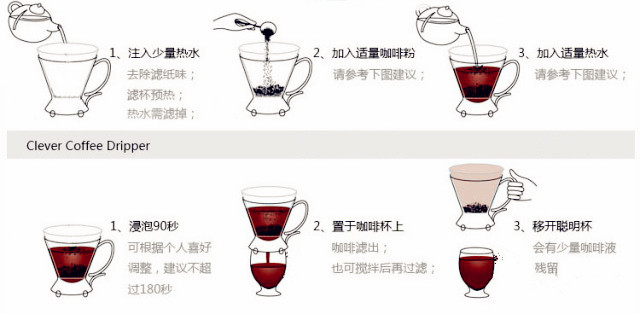
Bonavita coffee brewing professional coffee making utensils delicious coffee filter paper
The Ming cup is a very professional instrument for making coffee, which is made by imitating the principles of French pressure (French pressure pot) and hand flushing pot. There is a drainage switch at the bottom of the Congmin cup, through which coffee can smoothly pass through the filter paper. get cleaner, brighter, clearer coffee. This enables more friends to make a good cup of coffee. Bonavita brews coffee here to introduce to everyone.
Related
- Beginners will see the "Coffee pull flower" guide!
- What is the difference between ice blog purified milk and ordinary milk coffee?
- Why is the Philippines the largest producer of crops in Liberia?
- For coffee extraction, should the fine powder be retained?
- How does extracted espresso fill pressed powder? How much strength does it take to press the powder?
- How to make jasmine cold extract coffee? Is the jasmine + latte good?
- Will this little toy really make the coffee taste better? How does Lily Drip affect coffee extraction?
- Will the action of slapping the filter cup also affect coffee extraction?
- What's the difference between powder-to-water ratio and powder-to-liquid ratio?
- What is the Ethiopian local species? What does it have to do with Heirloom native species?

